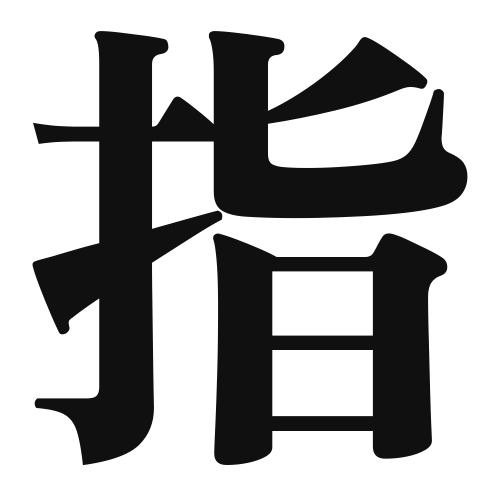1. Overview of Meaning
The kanji “指” (pronounced “shi” or “yubi”) means “finger” or “to point.” It is commonly used to refer to the digits of the hand and actions involving pointing or indicating something.
2. Formation and Radical
Formation of the Kanji: The kanji “指” is a phonetic compound (形声文字) that combines the radical for “hand” (扌) with the phonetic component “zhi” (指). This structure indicates its meaning related to the hand and its functions.
Radical: The radical of “指” is 扌, which is a variant of 手 (meaning “hand”). This radical is commonly found in kanji related to actions performed by the hand.
3. Examples of Usage
Common Words and Phrases: Some frequently used words that include “指” are:
- 指導 (しどう, shidou) – guidance
- 指示 (しじ, shiji) – instruction
- 指輪 (ゆびわ, yubiwa) – ring
Example Sentences in Daily Conversation:
- 彼は指で地図を指し示した。 (かれはゆびでちずをさししめした。) – He pointed to the map with his finger.
- 指輪を買いたいです。 (ゆびわをかいたいです。) – I want to buy a ring.
4. Synonyms and Antonyms
Similar Kanji: A similar kanji is “手” (て, te), which means “hand.” While “指” specifically refers to fingers, “手” encompasses the entire hand.
Opposite Meaning Kanji: An antonym could be “足” (あし, ashi), which means “foot.” While “指” refers to fingers, “足” refers to the lower extremities.
5. Cultural and Historical Background
Relation to Japanese Culture: In Japanese culture, fingers are often associated with communication and expression. The act of pointing can convey various meanings, from directing attention to expressing emotions.
Proverbs and Idioms: One common idiom is “指をくわえる” (ゆびをくわえる, yubi wo kuwaeru), which means “to watch something happen without being able to intervene,” similar to the English expression “to sit on the sidelines.”
